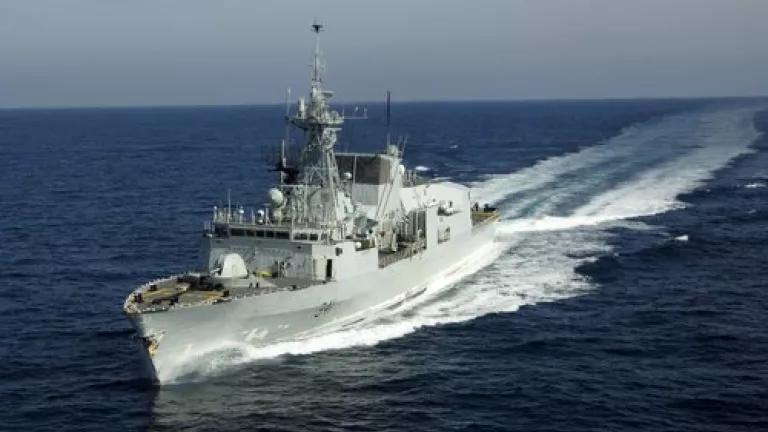
On Monday morning, a Canadian Navy frigate ran a sonar exercise in the waters of Haro Strait and the Strait of Juan de Fuca, Washington. Incredibly, a good portion of that exercise took place on the U.S. side of the border – in waters we have designated as critical habitat for killer whales under the Endangered Species Act.
Environmentally, there are few worse places off our coasts to run a sonar exercise, and not just because of the killer whales. The straits and channels beyond Puget Sound act as a natural sound duct, causing the high-intensity pings of navy sonar to reverberate, and extending their life from 1-second blasts to 20-second ordeals. The effect, to human ears, is excruciating: like fingernails across a chalkboard. One can only imagine how it sounds at high volume to creatures as acoustically sensitive as killer whales and other marine mammals.
Fortunately, biologists from the Whale Museum and Beam Reach, who monitor the area with hydrophones, recorded every signal from a distance. And in an email sent yesterday, the Canadian Navy confirmed that the sonar use was part of a training exercise.
When the U.S. Navy last trained with sonar here, in May 2003, it caused a panic among the killer whales, driving them into shallow waters where they closed ranks and roiled about in what, to some worried biologists, looked like pre-stranding behavior. It caused porpoises to evacuate the area en masse, and a large minke whale to be seen literally thrusting out of the water. A large number of harbor porpoises were later found to have stranded around the same time, although the cause was never determined.
The simple fact is that these waters should not be used for sonar training. Period. Even the U.S. Navy -- which has thus far refused to protect marine mammal habitat anywhere else on the west coast -- has effectively put the area off-limits to sonar use.
NRDC will appeal to both the Canadian and U.S. governments to ensure that this patently dangerous activity does not happen in this place again.
